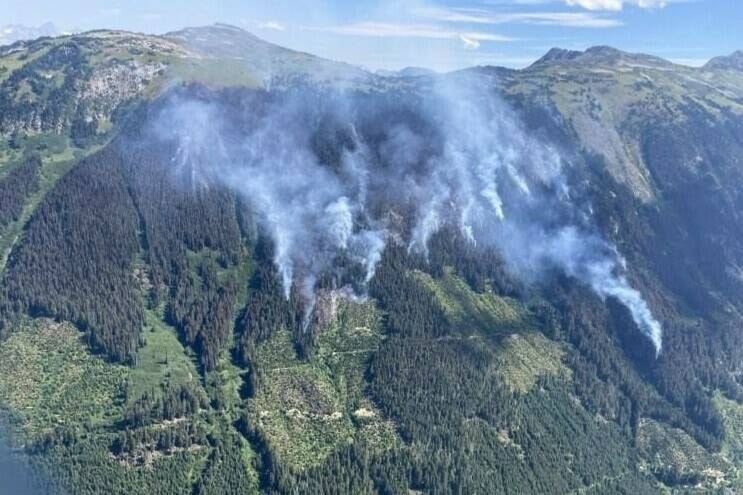Despite higher-than-average rainfall in the southern third of British Columbia in August, wildfires continue to burn in the northern part of the province.
In a provincial wildfire report, Rob Schweitzer, assistant deputy minister with the Ministry of Forests, BC Wildfire Service, said record-breaking heat and unseasonably dry conditions have supported extreme fire behaviour in the Nadina area and have heightened fire activity in the central and northern regions of the province.
At present, there are 350 crew members, one incident management team, aviation structure protection and heavy equipment resources working on fire response.
As of Sept. 19, a total of 1,621 wildfires had been reported in the province, with 1,056,702 hectares burned. This is the fourth worst wildfire season on record in British Columbia in terms of land destroyed by fire.
Of the 213 active wildfires, 80 per cent are listed as under control or being held, Schweitzer said.
Crews are now working on mop-up and patrol and are working on supporting cultural and prescribed fire projects.
A prescribed fire training exchange began near Cranboork on Sept. 15 and will run until Sept. 28. The pilot project is intended to serve as a model for other regions within the province.
“Prescribed fire is one of the most efficient ways to mitigate wildfire risk and an important tool for maintaining the health and safety of our forests, communities and wildlife,” Schweitzer said. “By using fire on land stewardship, we can develop healthy relationships with fire, which is an important part of the ecosystems we call home.”
Throughout the present fire season, the majority of the wildfires have been within the Prince George Fire Centre region which covers northeastern British Columbia.
A total of 786,810 hectares have been destroyed in that area.
To date this year, 73 per cent of wildfires recorded in the province have been the result of lightning, with 25 per cent caused by human activity and two per cent of undetermined causes.



